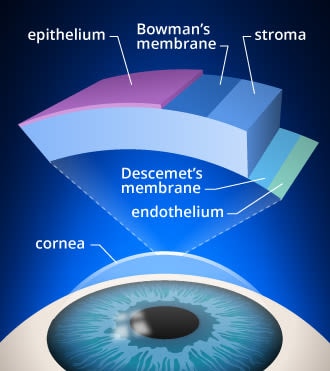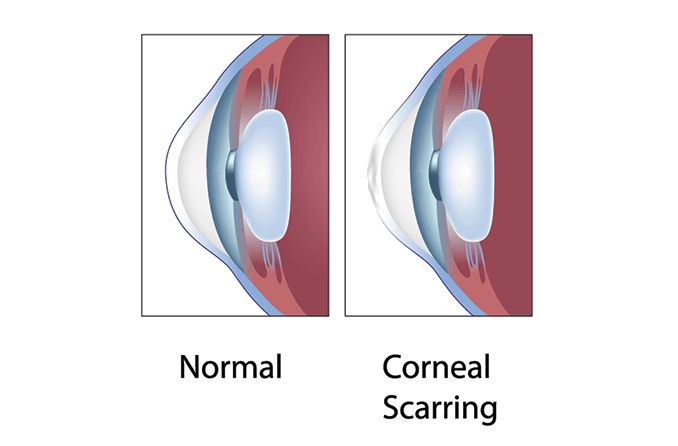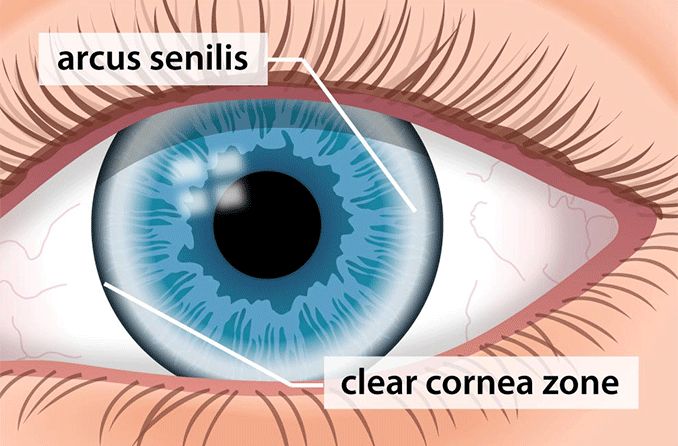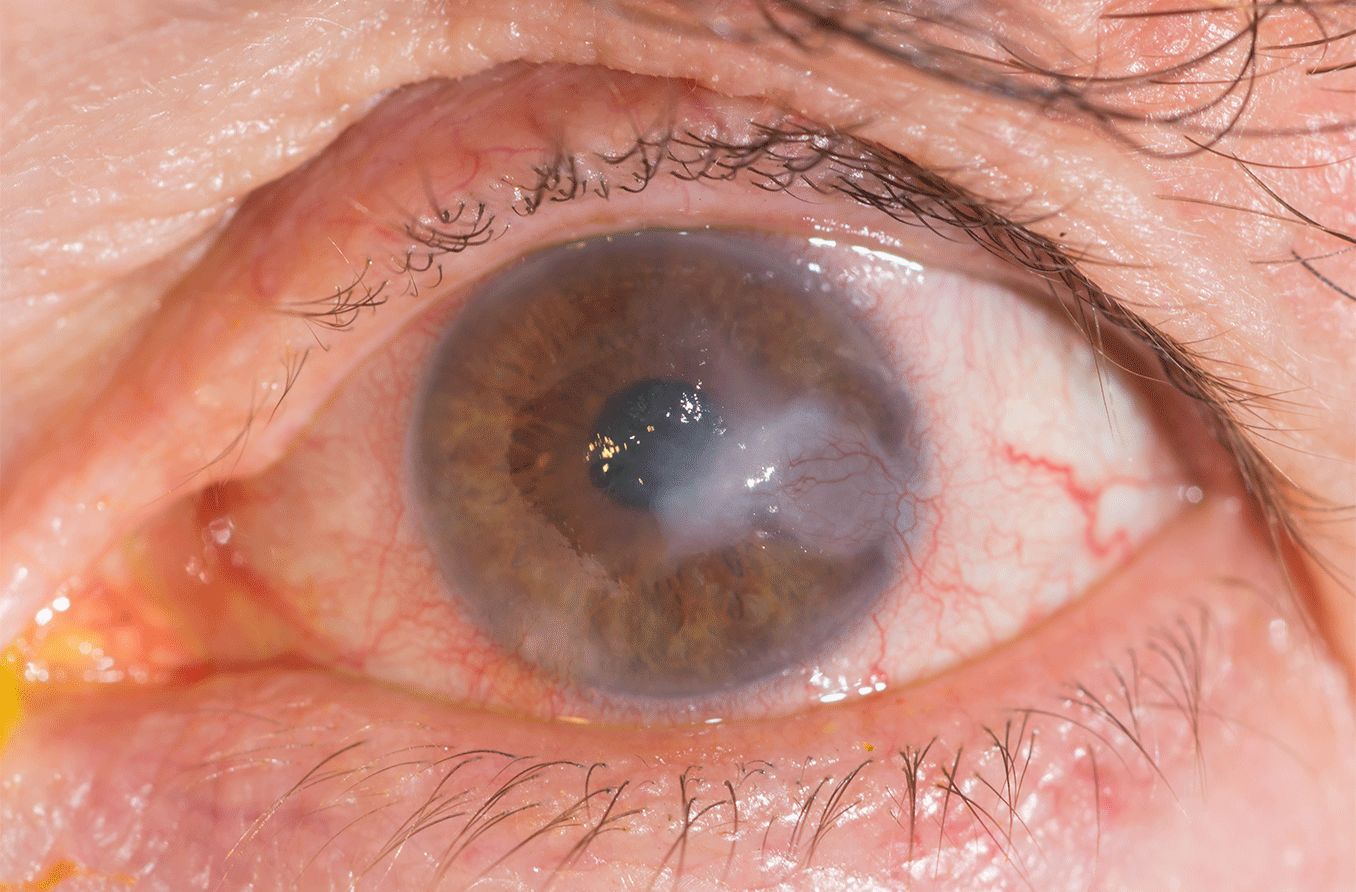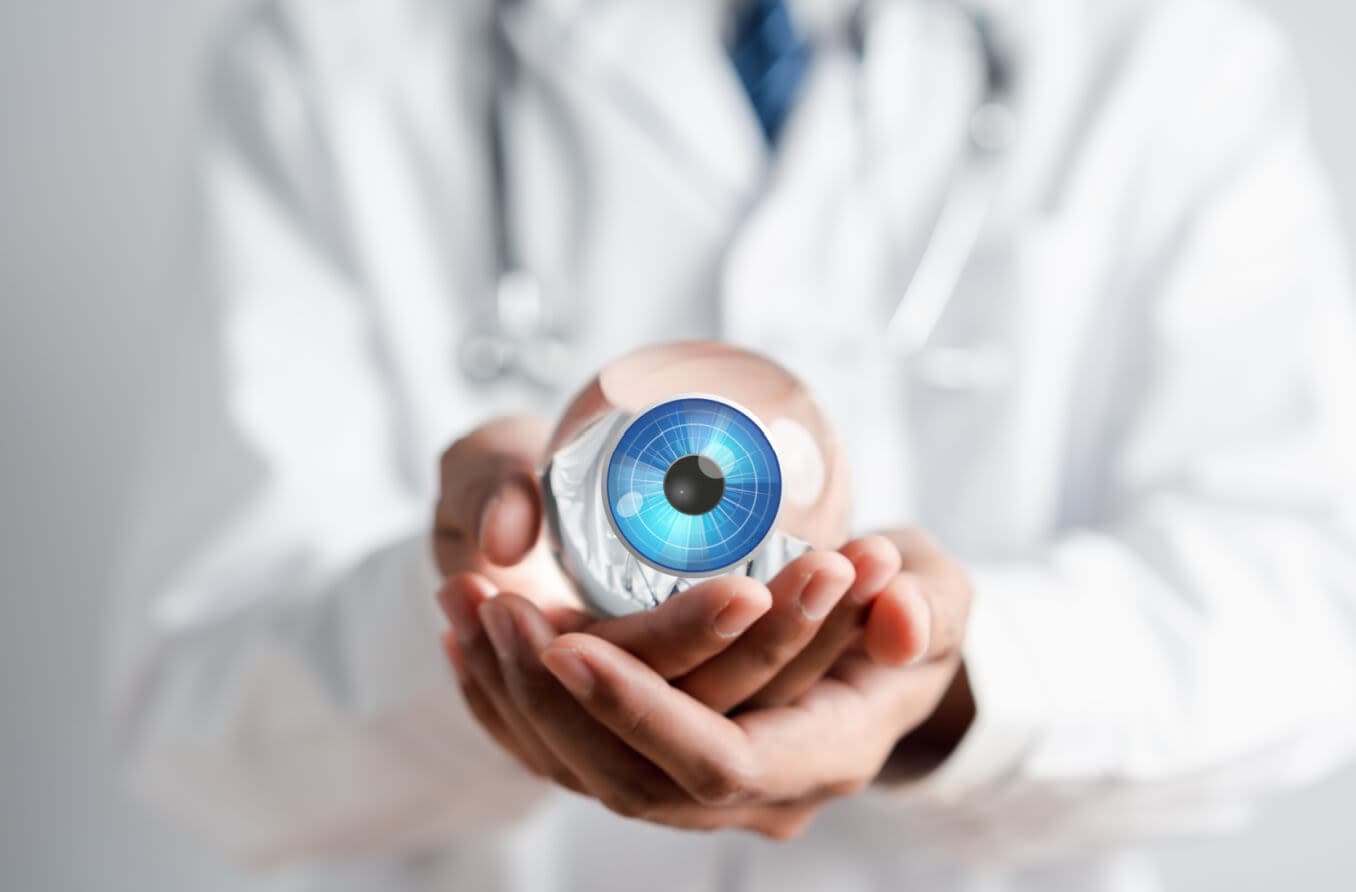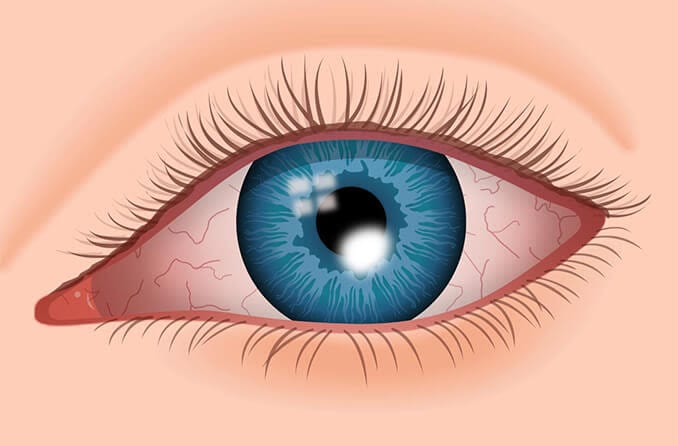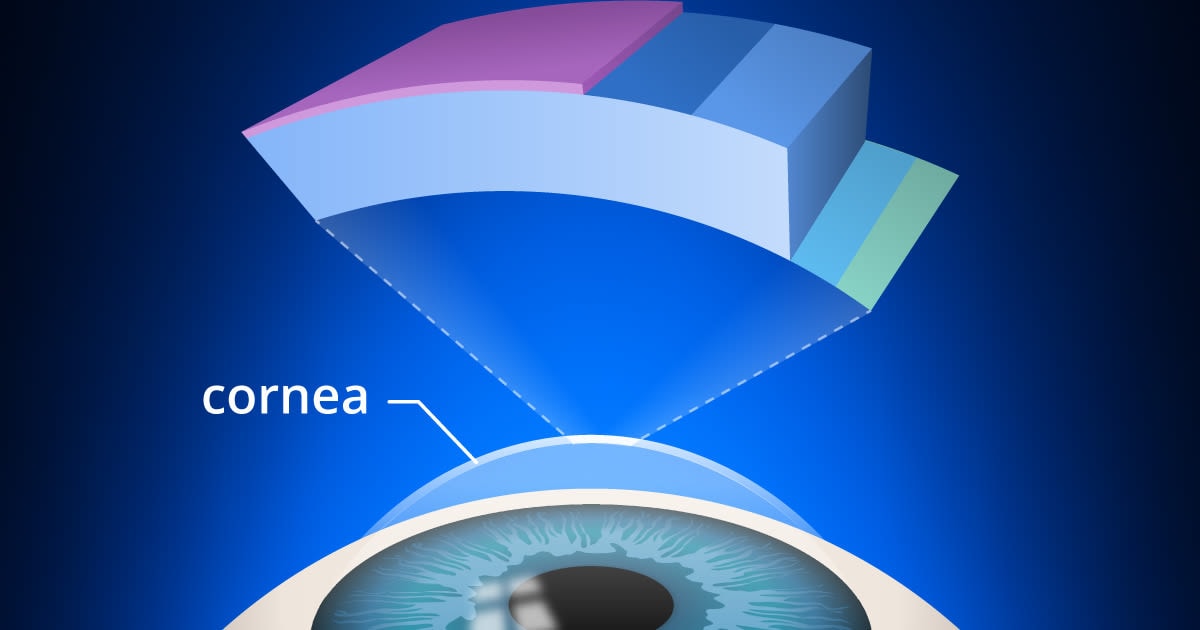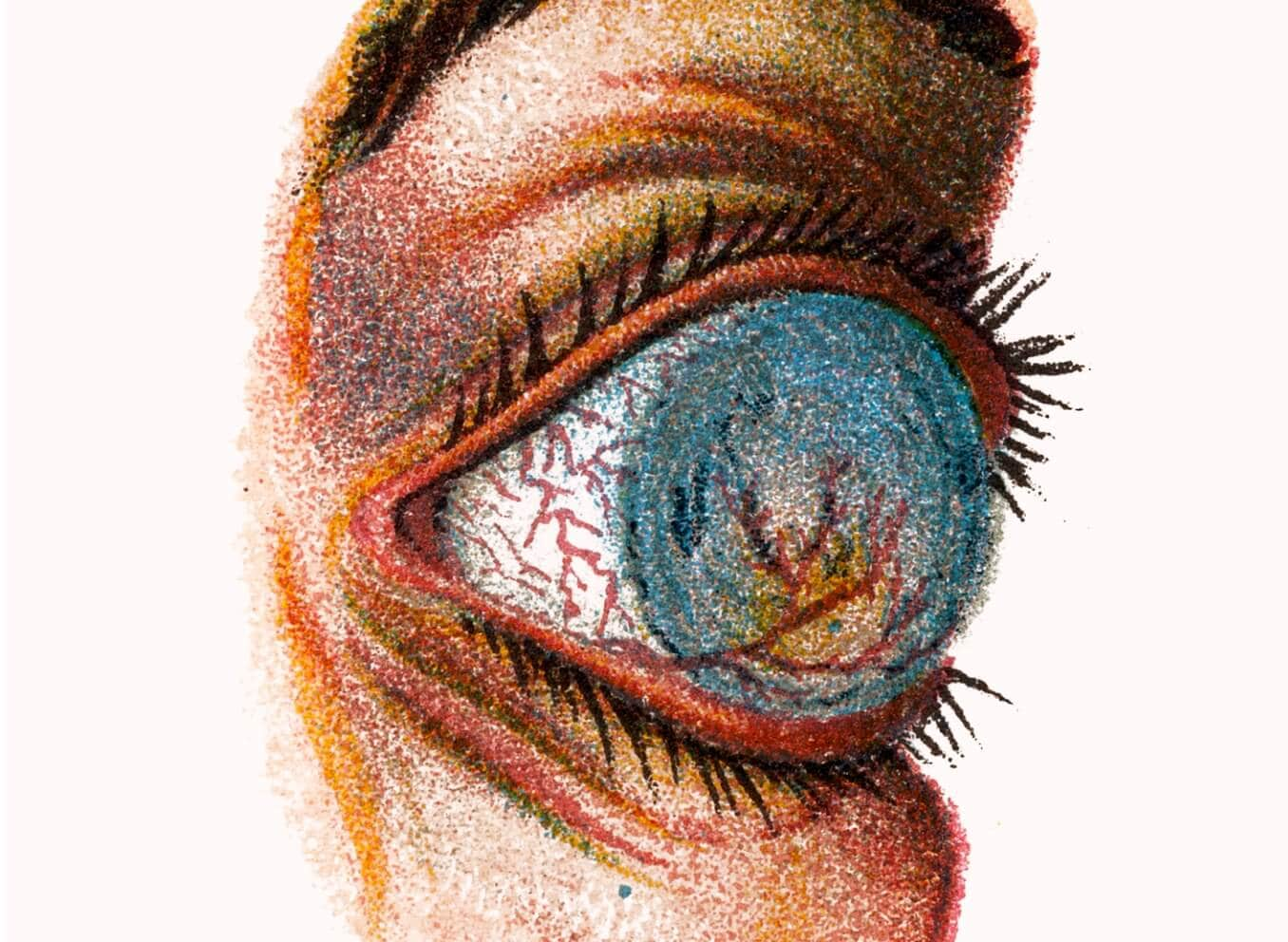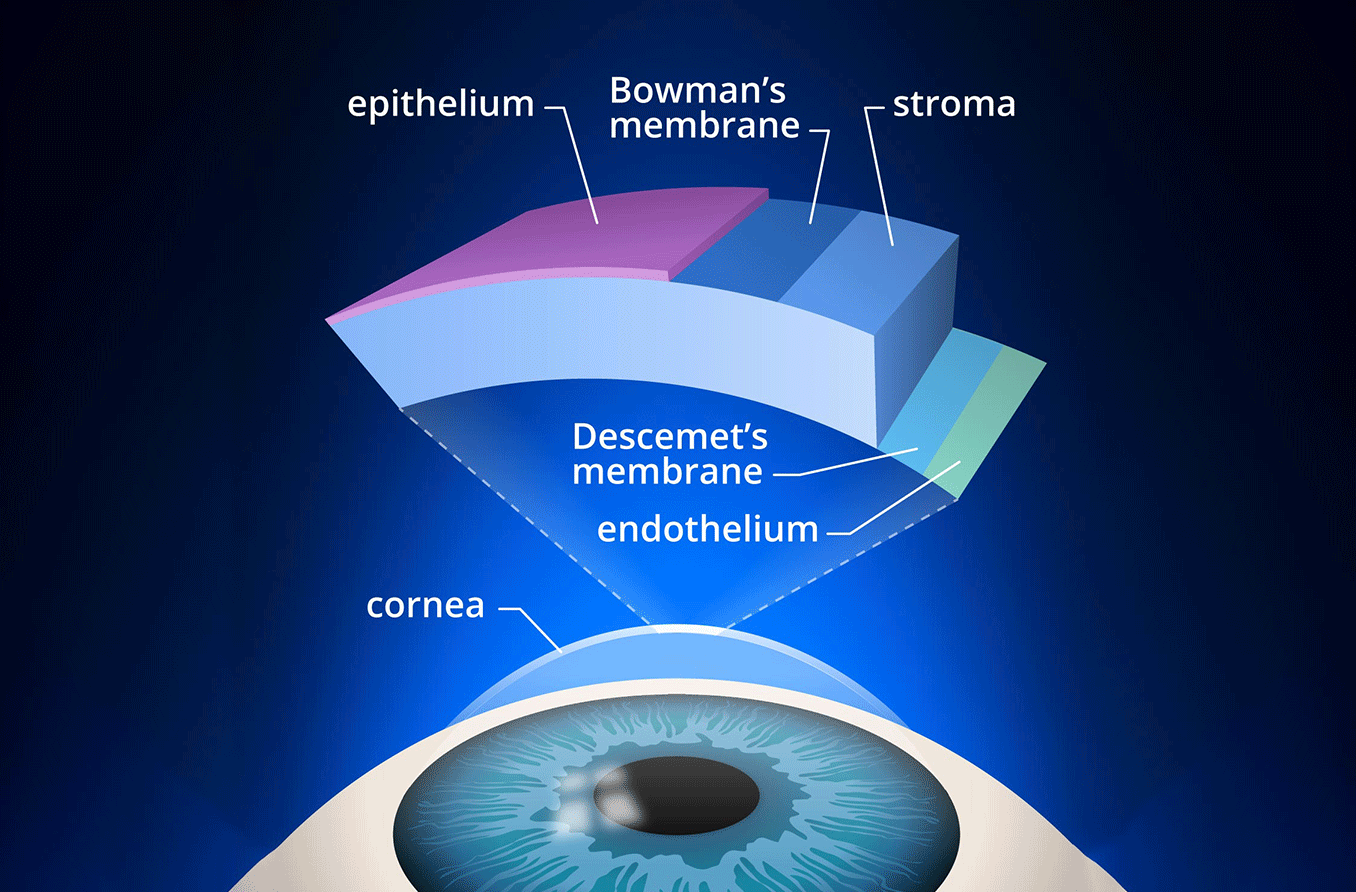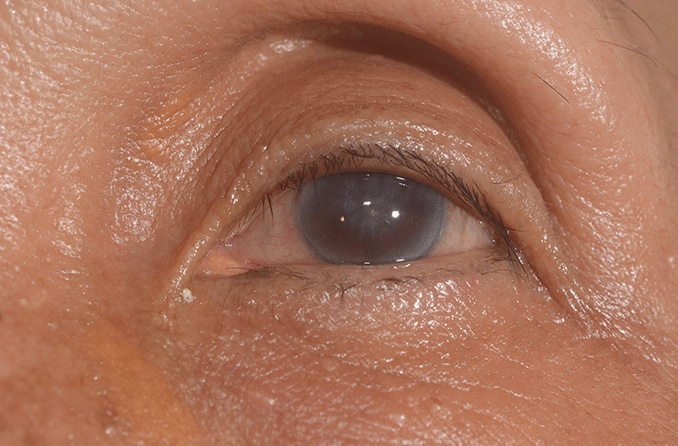Anything that can damage the cornea has the potential to cause corneal scarring, including:
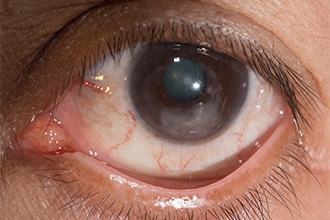
Corneal abrasion (scratch) or eye injury – Most of the time, a scratch on the cornea is a minor injury that only damages the outer layer, making it less likely to scar. More serious injuries caused by a hard hit to the eye or an abrasion from something sharp are more likely to result in a deeper wound and a corneal scar.
Eyelash lift – This is a cosmetic treatment that makes your eyelashes look fuller and curlier. A special perming solution is used to achieve these effects. Corneal scarring is possible if the solution gets in your eyes.
PRK (photorefractive keratectomy) – PRK is a surgery that uses lasers to correct nearsightedness, farsightedness and astigmatism by changing the shape of the cornea. Like any surgery, there are risks to having PRK, and corneal scarring is one of those risks.
Conditions that can cause corneal scarring
Not all corneal scarring results from injury or trauma. Some eye conditions can also cause corneal scarring, including:
Corneal dystrophies – These are eye diseases that involve changes in the cornea, and they are often hereditary. Some cause blindness and eye pain, while others don’t have any noticeable symptoms. Most corneal dystrophies get worse over time. Examples include:
Fuchs’ dystrophy – Fuchs’ dystrophy is when the endothelium layer is damaged and can’t efficiently pump excess fluid out of the stroma. This causes the cornea to swell and change shape, resulting in hazy vision and light sensitivity . It usually affects both eyes.
Reis bucklers corneal dystrophy – This disorder affects the epithelium and Bowman’s layer at the front of the cornea, causing scarring and clouding of Bowman’s membrane. People with Reis bucklers corneal dystrophy will have blurry vision or double vision in one eye.
Keratoconjunctivitis – This is inflammation that affects the eyes’ superficial cornea and conjunctiva (the loose connective tissue that covers the front of the eyeball). Keratoconjunctivitis can be caused by a virus, autoimmune disorder, bacteria, or allergies . Although rare, some forms of keratoconjunctivitis can result in corneal scarring.
Newborn conjunctivitis – Also known as ophthalmia neonatorum, this condition occurs within a baby’s first 30 days of life. Caused by a chlamydial, bacterial or viral infection, it can result in corneal scarring in both eyes and potentially even blindness.
Stevens-Johnson syndrome (SJS) – This syndrome causes painful blisters and lesions on the skin and mucous membranes and can lead to serious eye problems. Complications of severe eye disease include conjunctival and corneal scarring. The most common cause of SJS is an allergic reaction to a medication, though it can also result from an infection.
Xerophthalmia – A group of eye issues caused by vitamin A deficiency, it’s characterized by extreme dry eye and night blindness. It mostly affects infants and young children in poverty-stricken regions around the world.
Trachoma – Trachoma is a serious bacterial infection that can be transmitted through bodily fluids or contact with an infected person’s mouth, nose or eyes. It can result in corneal inflammation and cause the eyelashes to turn in. This can lead to repeated corneal abrasions and eventual scarring. Though uncommon in the U.S., trachoma is the No. 1 infectious cause of preventable blindness in the world.
Developmental glaucoma – This type of glaucoma affects babies, children and teenagers. There is an additional risk for corneal scarring or opacification because children’s eyes are still pliable and soft, and their high intraocular pressure can stretch and enlarge the cornea and other parts of the eye.
Keratoconus – People with this eye disorder have abnormal thinning of the cornea, which causes the front surface of the eye to bulge forward. Corneal scarring can occur when the overly thin cornea has been subjected to excessive eye rubbing or extended contact lens wear.
SEE RELATED: Apert syndrome
